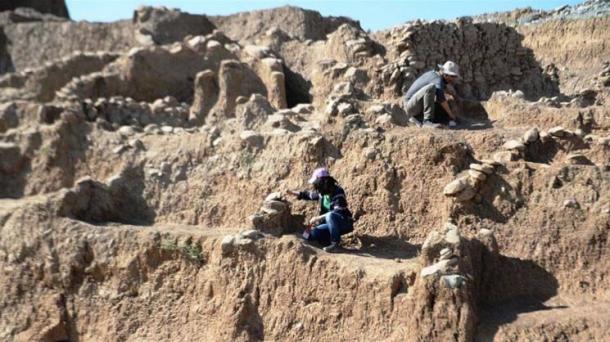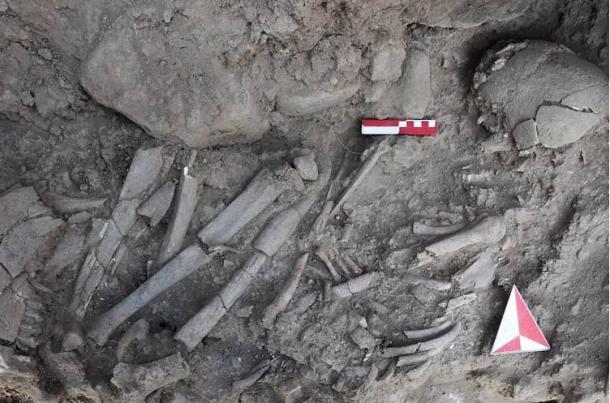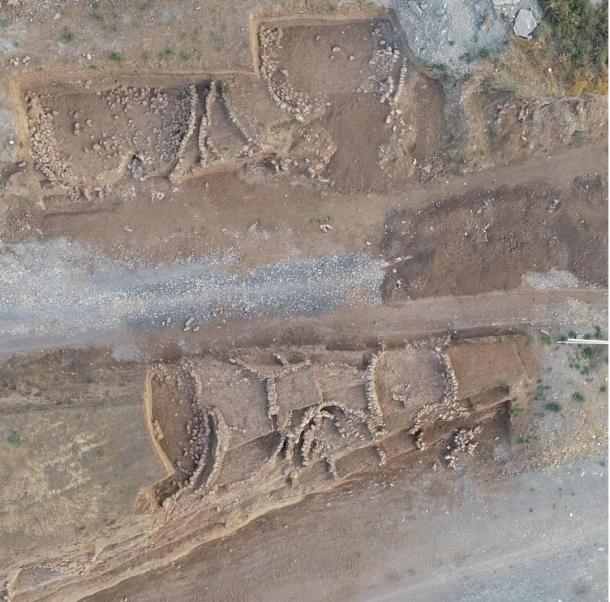Introduction
Imagine stepping back in time 12,000 years, to a world on the cusp of agricultural revolution. In the region near the upper Tigris River in southwestern Turkey, a remarkable discovery has shed light on the spiritual beliefs and practices of our ancient ancestors. The burial of a woman, believed to be a shaman, has captivated archaeologists and offered a rare glimpse into the intriguing world of Neolithic spirituality.
This extraordinary find, unearthed at the Çemka Höyük archaeological site, dates back to the Pre-Pottery Neolithic A (PPNA) period, a transitional era between 10,000 and 8,800 BC. During this time, hunter-gatherer societies were beginning to transition towards more settled ways of life, with the first signs of permanent settlements emerging in places like Jericho and Göbekli Tepe. The burial of the “shaman” woman at Çemka Höyük provides a unique window into the evolving spiritual beliefs and practices of these early Neolithic communities.

The Remarkable Burial
Excavations at the Çemka Höyük site have been ongoing, and the discovery of this ancient burial has left archaeologists intrigued. The woman, who died at the adult age of 25 to 30, was laid to rest beneath the floor of a mud-brick building, oriented in a northwest-southeast direction and facing west. This practice of burying the dead under home floors was common during the PPNA period, but the researchers were immediately struck by several unusual aspects of this particular burial.
First and foremost, the woman’s grave was covered with a large limestone block, which is highly atypical for this time period. Additionally, she was buried alongside a remarkable assortment of animal remains, including the bones and skull of an extinct cattle species known as the aurochs, as well as the remains of a small ruminant, a partridge, a canid, and a marten.
The nature of this burial, along with the diverse array of animal remains, has led the researchers to believe that this woman may have been a shaman, or at least buried by someone practicing shamanism. This burial could represent one of the earliest known examples of its kind in a Neolithic context from the Anatolian peninsula.

The Significance of the Animal Remains
The inclusion of these animal remains in the woman’s burial is particularly intriguing, as they provide clues about her potential role within the community. During the PPNA period, these creatures would have been wild, as the domestication of farm animals had not yet occurred. Their presence in the grave suggests a deep, symbolic connection between the woman and the natural world around her.
The abundance of aurochs bones, in particular, underscores the significance of these wild cattle, which would not be domesticated for thousands of years but were already a crucial food source for these early Neolithic communities. The placement of the aurochs skull above the woman’s body, with its jaw separated and positioned at her feet, further emphasizes the importance of this animal in the burial rites.
Additionally, the inclusion of the wing of a partridge, the leg of a marten, and the remains of a sheep or goat, suggests that the woman may have had a special relationship with these creatures. Perhaps she was seen as a conduit between the human and animal realms, with the ability to communicate with and harness the power of the natural world.

The Shaman’s Role in Early Neolithic Society
The findings at Çemka Höyük offer valuable insights into the development of ritual beliefs and practices in early Neolithic societies. As archaeologist Steve Mithen of the University of Reading notes, the social and environmental changes during the PPNA period may have heightened the importance of individuals who could communicate with unseen forces, such as shamans.
In many traditional societies, shamans are often regarded as charismatic, occasionally religious, or even “mad” figures who are set apart from the rest of the community. They are believed to have the ability to travel between the physical and spiritual worlds, acting as intermediaries and healers. The authors of the study suggest that the woman buried at Çemka Höyük may have been one such individual, with her unique role and appearance setting her apart from the rest of her community.
It’s also possible that certain aspects of the burial, such as the placement of the aurochs skull and the large limestone slab covering the grave, were intended to ensure that the (potential) former shaman remained in the world of the dead, with the community fearing her return as a malevolent spirit. Similar practices have been observed in other prehistoric burials, where measures were taken to prevent the deceased from leaving their final resting place.
The Enduring Mystery of Shamanism
While the term “shaman” was coined in the 18th century to describe indigenous practices in Siberia, the exact role and significance of such individuals in the Neolithic period may not be fully understood. As archaeologist Bill Finlayson of Oxford University points out, the practices and beliefs associated with shamanism can vary greatly across cultures and time periods, making it challenging to draw definitive conclusions about the woman’s specific role within her community.
Nonetheless, the burial at Çemka Höyük, with its unique characteristics and the presence of diverse animal remains, suggests that this woman held a special place within her society. Whether she was a shaman, a spiritual leader, or someone with a deep connection to the natural world, her final resting place has provided a rare glimpse into the evolving beliefs and practices of our Neolithic ancestors.
Conclusion
The discovery of the 12,000-year-old burial at Çemka Höyük in Turkey has captivated the archaeological community, offering a tantalizing glimpse into the spiritual beliefs and practices of early Neolithic societies. The burial of a woman, potentially a shaman, accompanied by an array of animal remains, has sparked new discussions about the role of these spiritual intermediaries in the transition towards more settled ways of life.
As we continue to uncover the secrets of the past, the Çemka Höyük burial serves as a powerful reminder of the rich and complex tapestry of human history. It invites us to step back in time and explore the evolving beliefs and practices that shaped the lives of our ancient ancestors, and to consider the enduring legacy of shamanism in the human experience.

